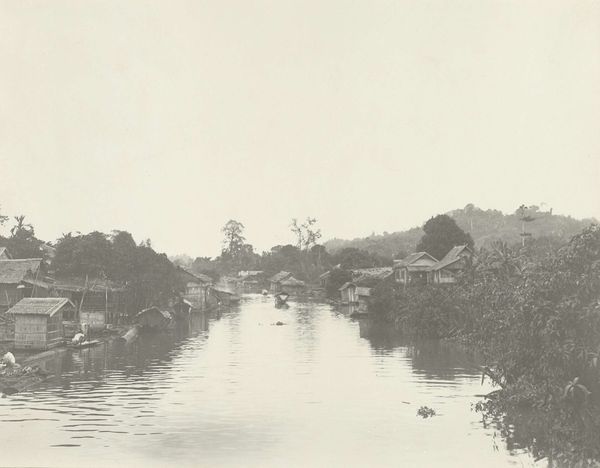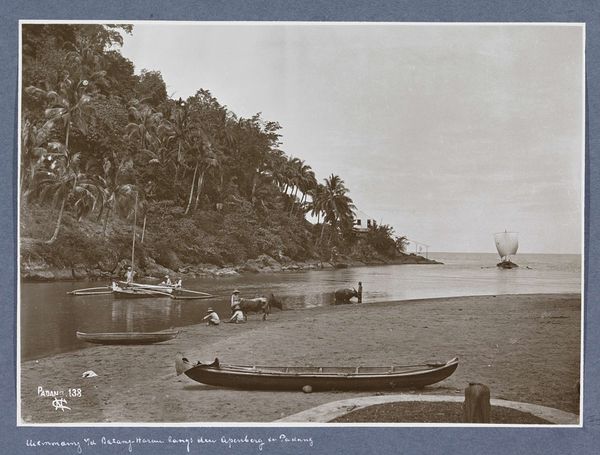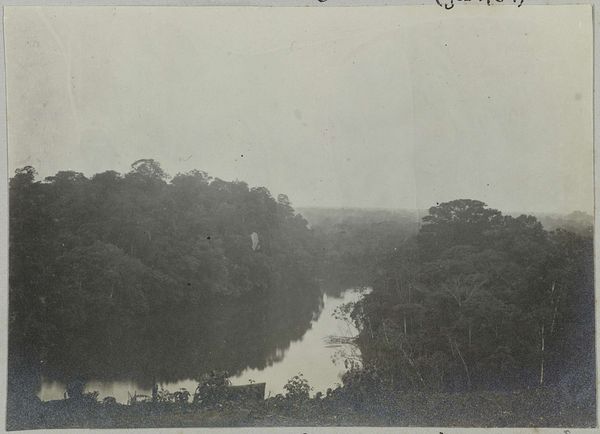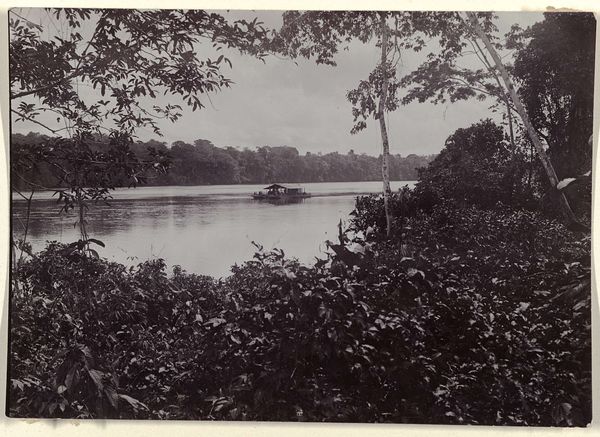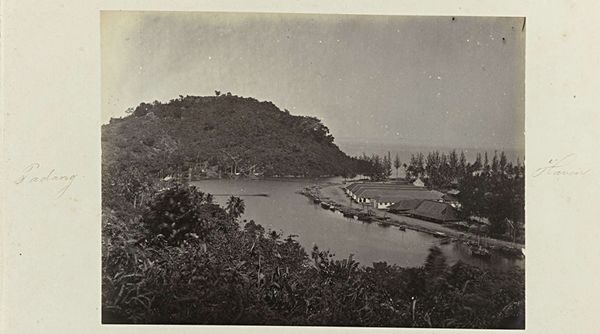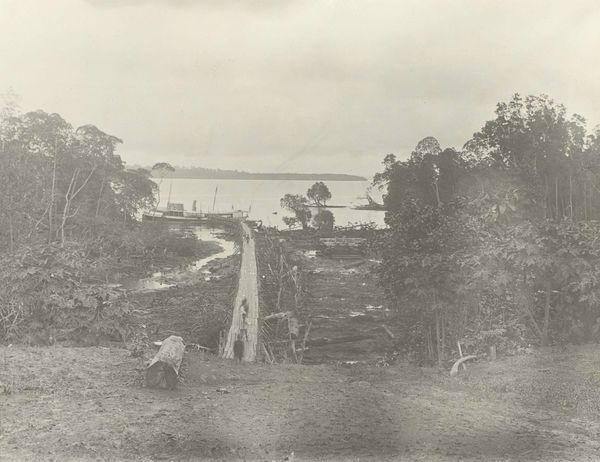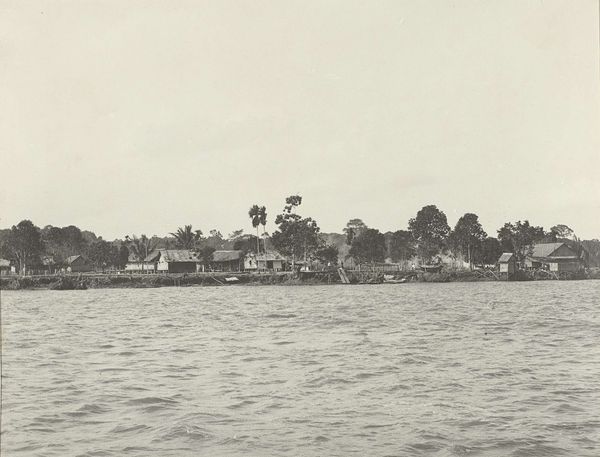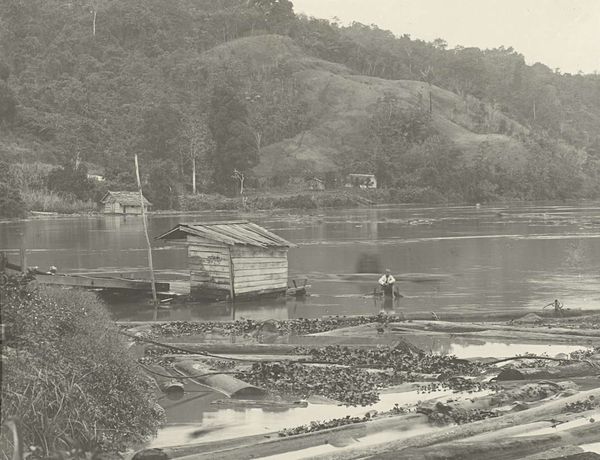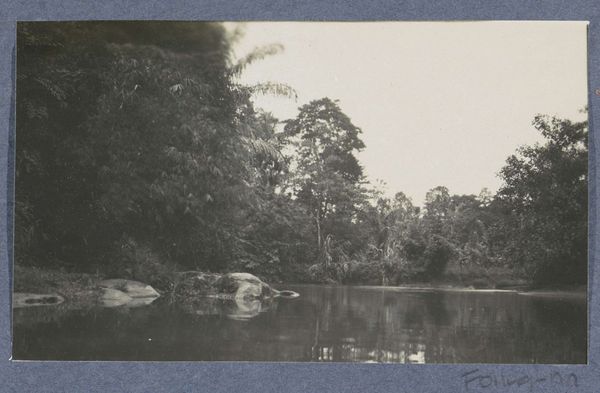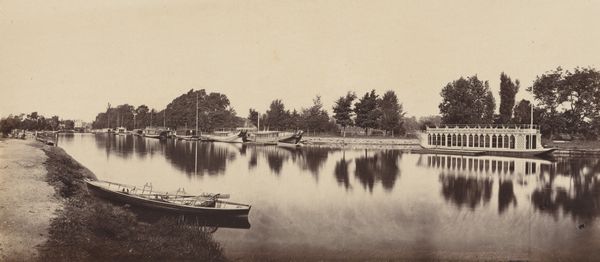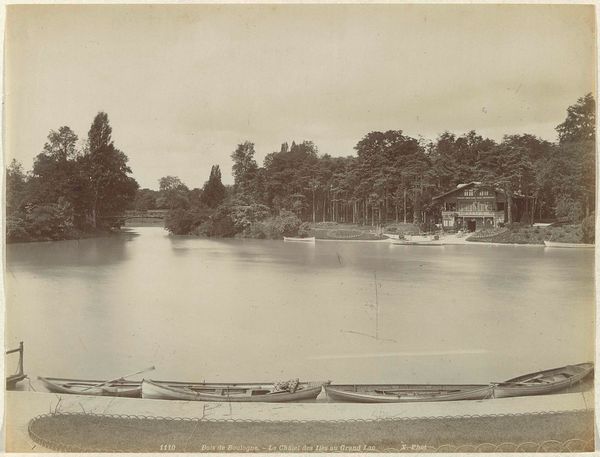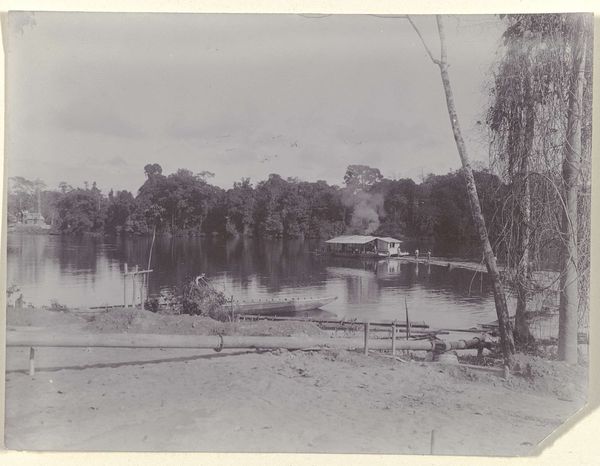
photography
#
pictorialism
#
landscape
#
photography
Dimensions: height 280 mm, width 215 mm, height 385 mm, width 440 mm
Copyright: Rijks Museum: Open Domain
Editor: Here we have a landscape photograph titled "Rivier", created sometime between 1903 and 1907. It’s a rather muted, dreamy image of a river scene with what appear to be dwellings on the water. What can you tell me about it? Curator: Looking at this through a materialist lens, I am immediately drawn to the photographic process itself. Early 20th-century photography involved a complex alchemy of chemicals and light, a labor-intensive practice quite different from our digital age. Consider the albumen paper or platinum print possibly used here; these dictated not only the tonal range but also the physical lifespan and texture of the artwork. Editor: That's a really good point; it certainly does look like more of a handcrafted aesthetic rather than an immediate snapshot. How does that context influence its interpretation? Curator: I think the hand of the artist is present, a move against industrialization, even if using industrial methods themselves. These river dwellings speak of labor and lives lived close to the materials at hand, in a co-dependent, give-and-take relationship with nature and a mode of production. Does this evoke the pre-industrial lives that artists at this time both escaped and simultaneously romanticized? Editor: That makes me think about how these photographs, which maybe tried to evoke a romantic landscape, become records of labor and working class experience at the same time. Curator: Exactly. And how that impacts our understanding of artistic movements in the context of industrial growth. Something to continue researching! Editor: This has definitely given me a lot to consider; thanks so much.
Comments
No comments
Be the first to comment and join the conversation on the ultimate creative platform.
